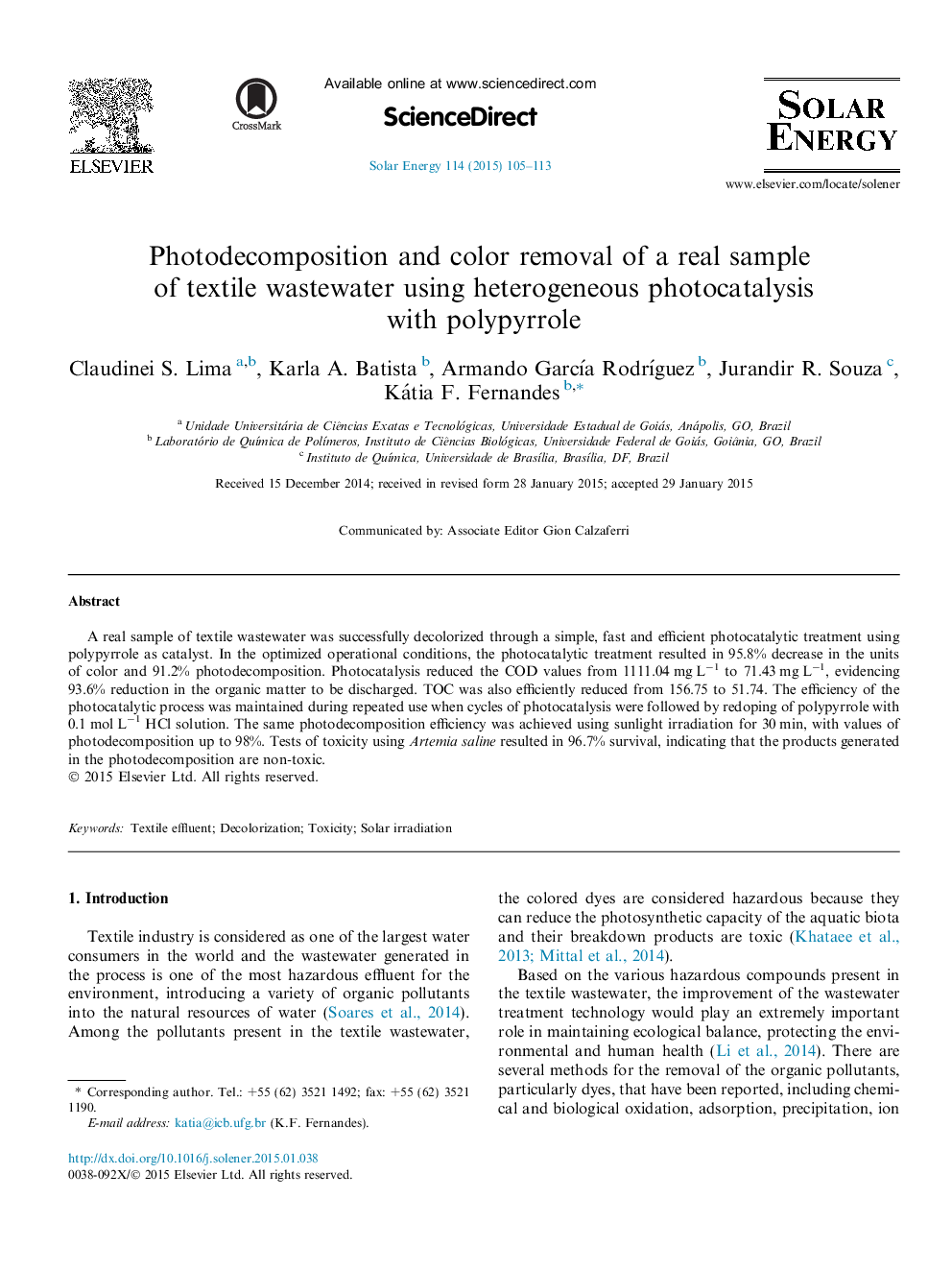| Article ID | Journal | Published Year | Pages | File Type |
|---|---|---|---|---|
| 7937955 | Solar Energy | 2015 | 9 Pages |
Abstract
A real sample of textile wastewater was successfully decolorized through a simple, fast and efficient photocatalytic treatment using polypyrrole as catalyst. In the optimized operational conditions, the photocatalytic treatment resulted in 95.8% decrease in the units of color and 91.2% photodecomposition. Photocatalysis reduced the COD values from 1111.04 mg Lâ1 to 71.43 mg Lâ1, evidencing 93.6% reduction in the organic matter to be discharged. TOC was also efficiently reduced from 156.75 to 51.74. The efficiency of the photocatalytic process was maintained during repeated use when cycles of photocatalysis were followed by redoping of polypyrrole with 0.1 mol Lâ1 HCl solution. The same photodecomposition efficiency was achieved using sunlight irradiation for 30 min, with values of photodecomposition up to 98%. Tests of toxicity using Artemia saline resulted in 96.7% survival, indicating that the products generated in the photodecomposition are non-toxic.
Related Topics
Physical Sciences and Engineering
Energy
Renewable Energy, Sustainability and the Environment
Authors
Claudinei S. Lima, Karla A. Batista, Armando GarcÃa RodrÃguez, Jurandir R. Souza, Kátia F. Fernandes,
